Three identical conducting plain parallel plates, each of area A are held with equal (/ between successive surfaces. Charges 2Q, and 3Q are placed on them. Neglecting edge effects, find the Charge on the left face of the middle plate
0
2Q
3Q
None of the Above
The correct Answer is:B
q1=q6=qnet2=3Q
q2=Q−q1=−2Q
q3=q2=+2Q
q4=2Q−q3=0
q5=−q4=0 
Topper's Solved these Questions
- BOOK - DC PANDEYCHAPTER - ELECTROSTATICSEXERCISE - Exercise 24.14videos
ELECTROSTATICS
- BOOK - DC PANDEYCHAPTER - ELECTROSTATICSEXERCISE - Exercise 24.29videos
ELECTROSTATICS
- BOOK - DC PANDEYCHAPTER - ELECTROSTATICSEXERCISE - Example Type 83videos
ELECTROSTATICS
- BOOK - DC PANDEYCHAPTER - ELECTROSTATIC POTENTIAL AND CAPACITORSEXERCISE - (C) Chapter exercises50videos
ELECTROSTATIC POTENTIAL AND CAPACITORS
- BOOK - DC PANDEYCHAPTER - GRAVITATIONEXERCISE - All Questions120videos
GRAVITATION
Similar Questions
Three identical metal square plates of surface area A of each side is arranged as shown in the figure.Plates 1 2 and 3 are given charges +20, -Q and -Q respectively. Find out the correct options A) Charge on the two faces of the middle plate are -2Q and Q B) Charge on the two faces of the middle plate are -Q and 0 C) Charge on the two faces of the left most plate are zero and 2Q D) Charge on the two faces of the right most plate are -Q and zero
View SolutionThree parallel metalic plates each of area A are kept as shown in figure and charges q1,q2 and q3 are given to them. Find the resulting charge distribution on the six surfaces, neglecting edge effects as usual,
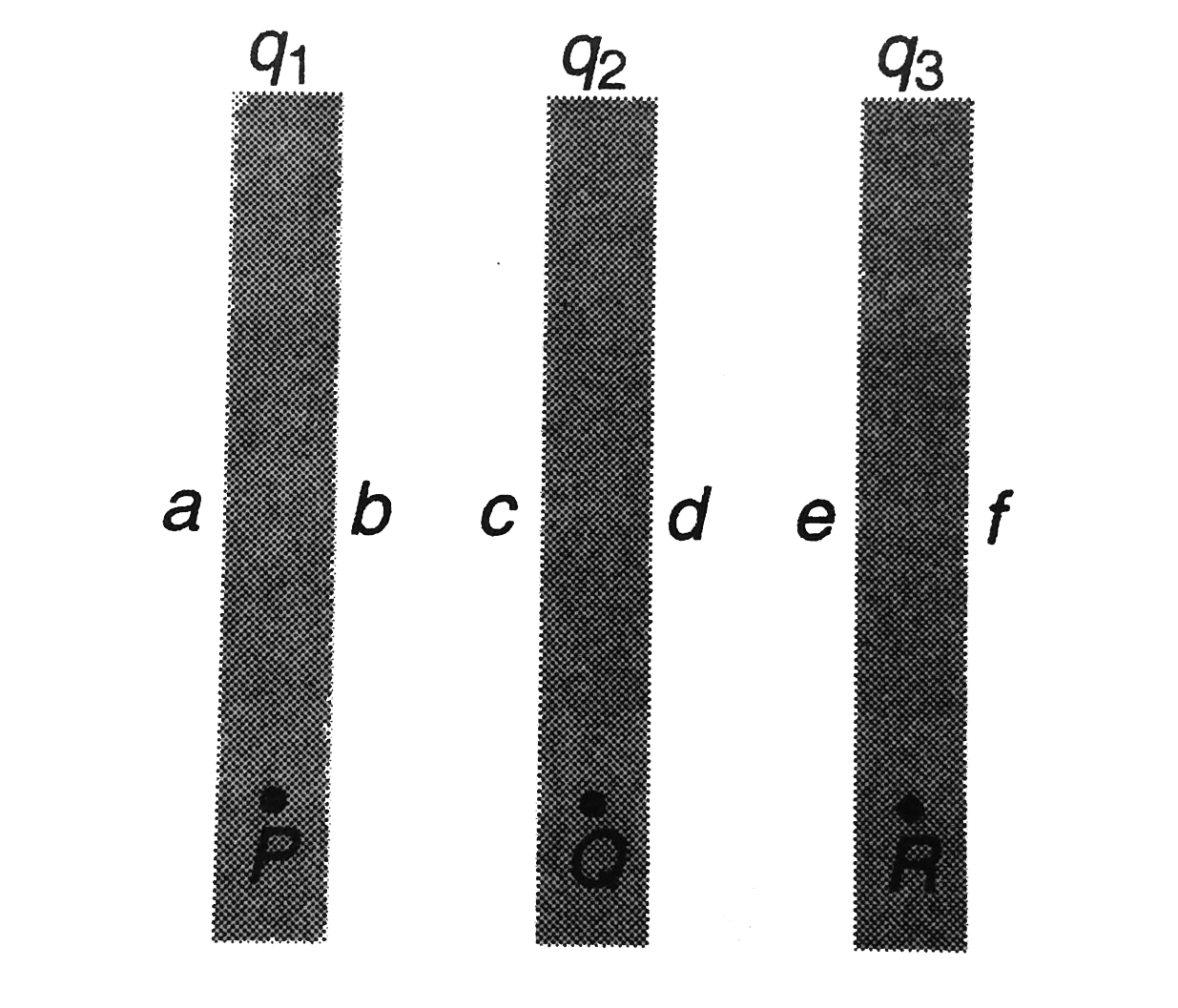 View Solution
View Solution
Knowledge Check
- Question 1 - Select One
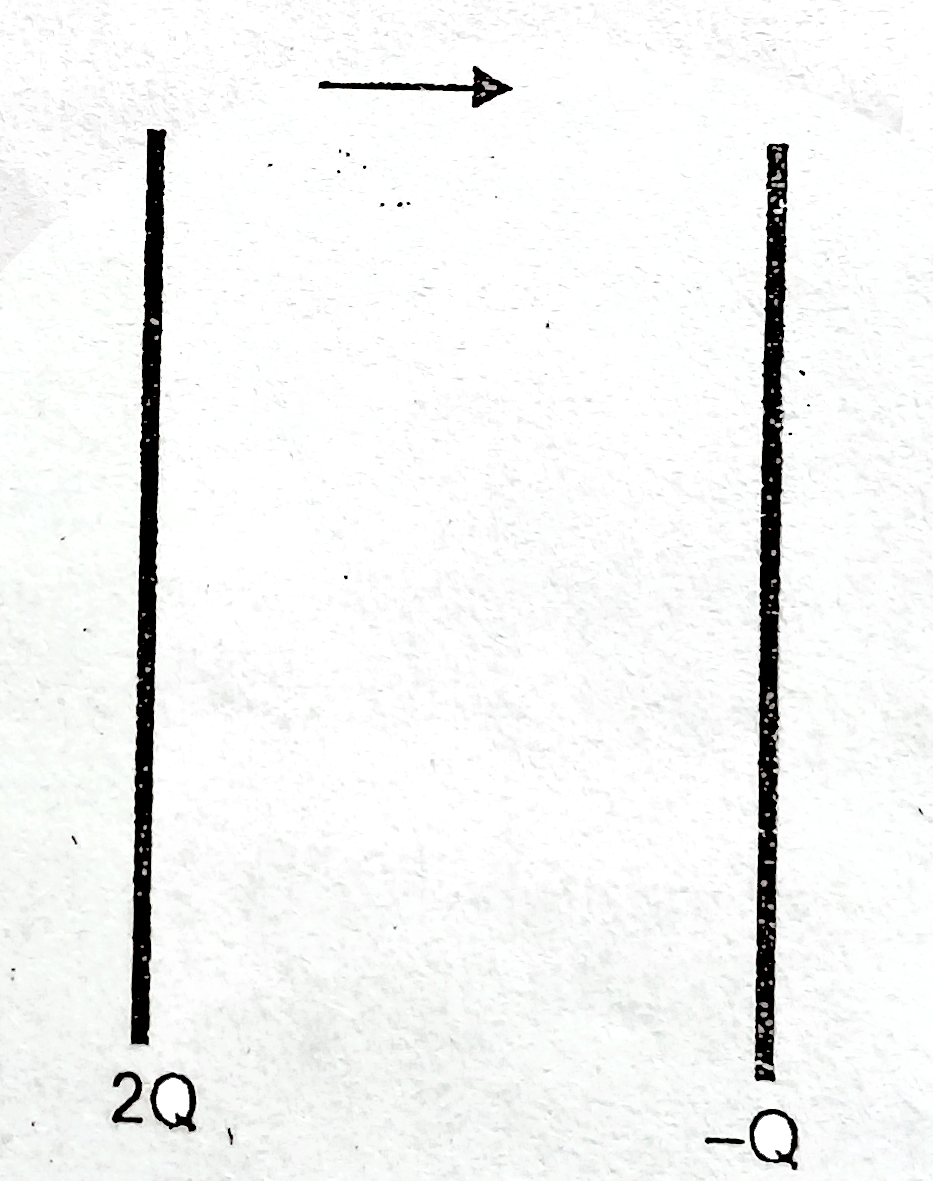
Two large parallel conducting plates of net charge 2Q and −Q are placed in a uniform external electric field Q2Aε0 prependicular to plates as shown. The surface area of each plates is A. The charge on the left surface of the left plate and right surface of the right plate are respectively.AQ/2 ad −3Q/2BQ an 0C0 and QDQ/2 and Q/2
Three large conducting sheets placed parallel to each other at a finite distance contain charges Q,−2Q,and3Q, respectively. Find the electric fields at points A, B, C, and D.
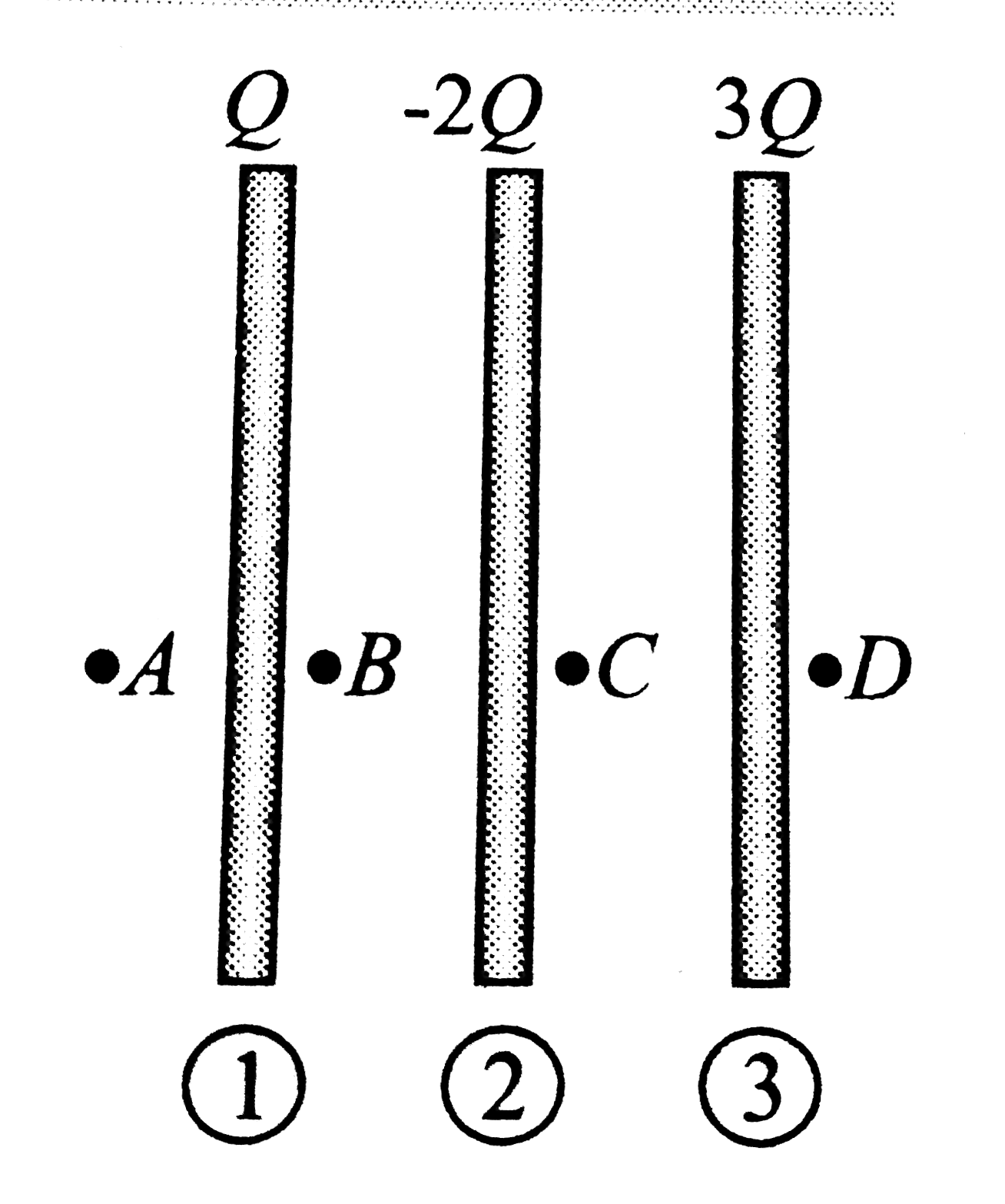 View Solution
View SolutionTwo large conducting plates of a parallel plate capacitor are given charges Q and 3Q respectively. If the electric field in the region between the plates is E0 , then the force of interaction between the plates is
 View Solution
View SolutionThree conducting plates of area 500cm2 area kept fixed as shown. Distance between adjacent plates is 8.85 mm. A charge of 1.0nC is placed on the middle plate. (a) The charge on the outer surface of the upper plates is given by n×10−11C then find the value of n. (b) Find the potential difference (inV) developed between the upper and the middle plates.
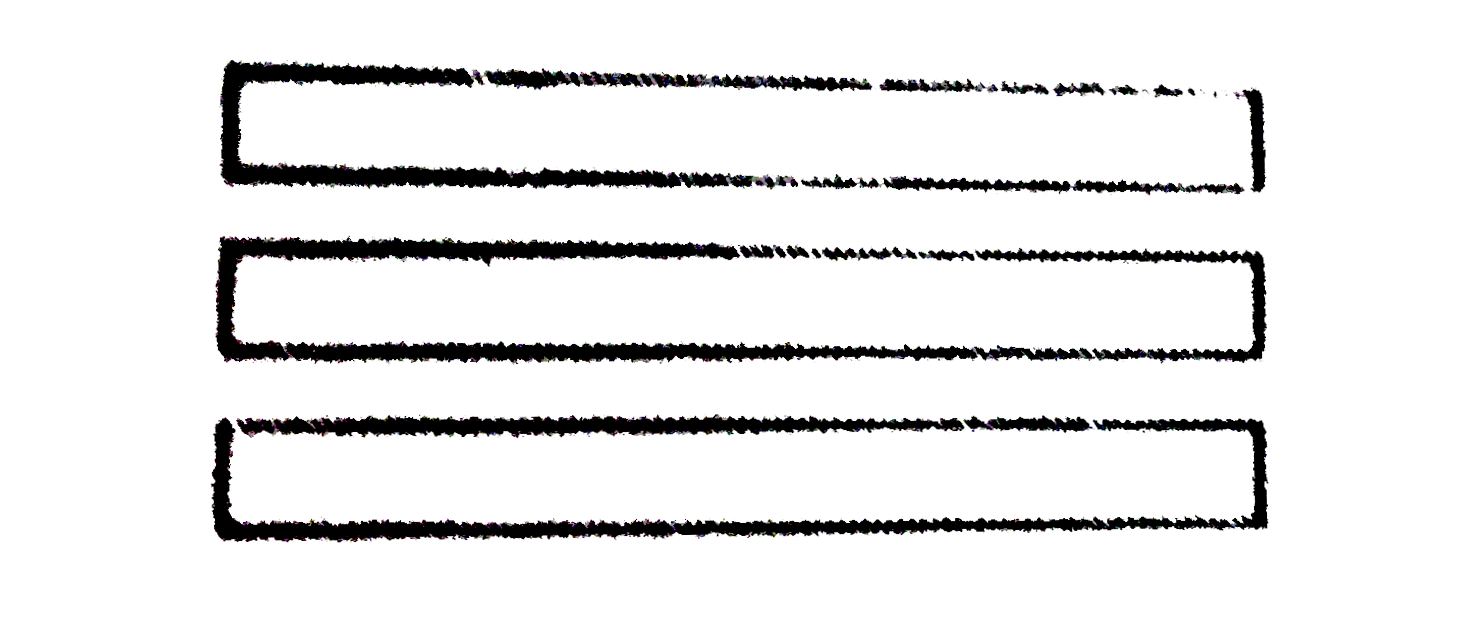 View Solution
View SolutionThe charge on a parallel plate capacitor varies as =q0cos2πft. The plates are very large and close together (area=a,separation=d). Neglecting the edge effects, find the displacement current through the capacitor.
View SolutionThree identical metallic plates, each of area A, are kept at small separations as shown. Initially, charge Q, 3Q and 3Q are given to the plates A, B and c, respectively. Now, both the switches S1 and S2 are closed simultaneously. Then Charge flown through S1 and S2 are
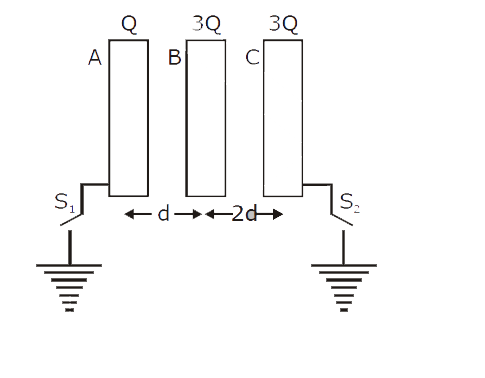 View Solution
View SolutionThree charged conducting plates are separated by small distances as shown in figure. The charges on the plates are shown. Find the ratio of charge on right surface and left surface of the middle plate.
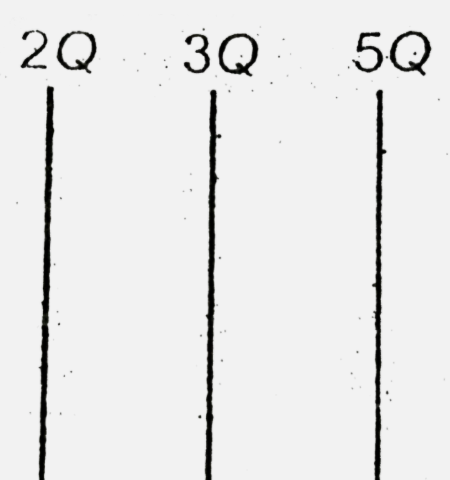 View Solution
View SolutionThree identical metallic plates are kept parallel to one another at a separation of a and b The outer plates are connected by a thin conducting wire and a charge Q is placed on the central plate Find final charges on all the surfaces of the three plates.
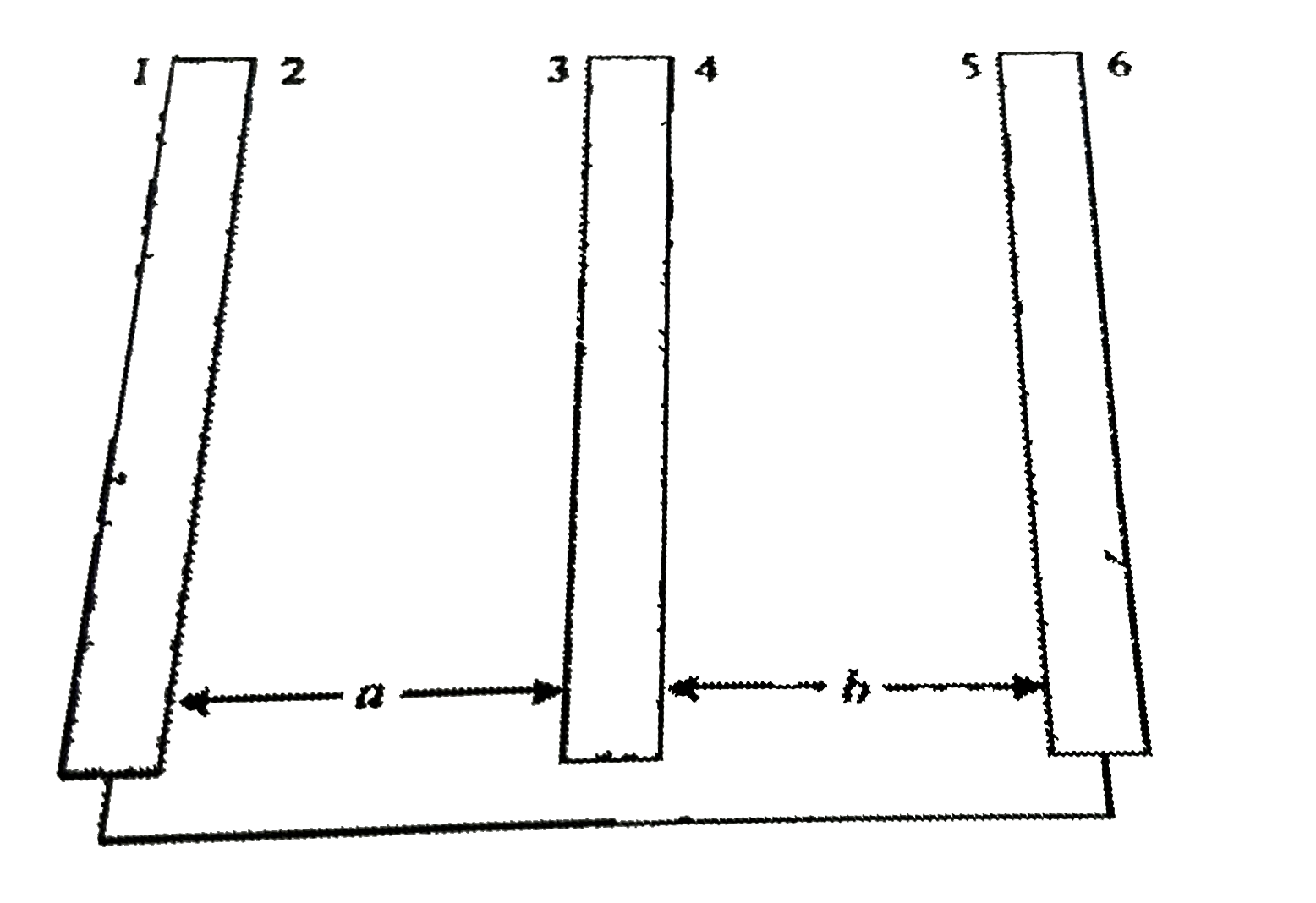
[faces(1)Q2,(2)−Qba+b,(3)Qba+b,(4)Qaa+b,(5)−Qaa+b,(6)Q3]View Solution

